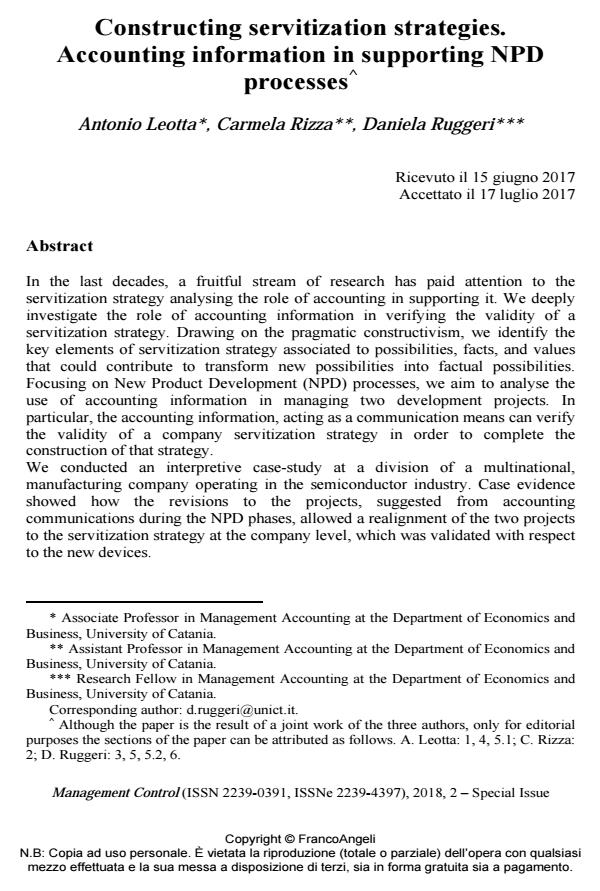Constructing servitization strategies. Accounting information in supporting NPD processes
Journal title MANAGEMENT CONTROL
Author/s Antonio Leotta, Carmela Rizza, Daniela Ruggeri
Publishing Year 2018 Issue 2018/2 Suppl.
Language English Pages 29 P. 53-81 File size 286 KB
DOI 10.3280/MACO2018-SU2004
DOI is like a bar code for intellectual property: to have more infomation
click here
Below, you can see the article first page
If you want to buy this article in PDF format, you can do it, following the instructions to buy download credits

FrancoAngeli is member of Publishers International Linking Association, Inc (PILA), a not-for-profit association which run the CrossRef service enabling links to and from online scholarly content.
In the last decades, a fruitful stream of research has paid attention to the servitization strategy analysing the role of accounting in supporting it. We deeply investigate the role of accounting information in verifying the validity of a servitization strategy. Drawing on the pragmatic constructivism, we identify the key elements of servitization strategy associated to possibilities, facts, and values that could contribute to transform new possibilities into factual possibilities. Focusing on New Product Development (NPD) processes, we aim to analyse the use of accounting information in managing two development projects. In particular, the accounting information, acting as a communication means can verify the validity of a company servitization strategy in order to complete the construction of that strategy. We conducted an interpretive case-study at a division of a multinational, manufacturing company operating in the semiconductor industry. Case evidence showed how the revisions to the projects, suggested from accounting communications during the NPD phases, allowed a realignment of the two projects to the servitization strategy at the company level, which was validated with respect to the new devices.
Keywords: Servitization Strategy, New Product Development, Pragmatic Constructivism, Accounting Information Systems
Antonio Leotta, Carmela Rizza, Daniela Ruggeri, Constructing servitization strategies. Accounting information in supporting NPD processes in "MANAGEMENT CONTROL" 2 Suppl./2018, pp 53-81, DOI: 10.3280/MACO2018-SU2004